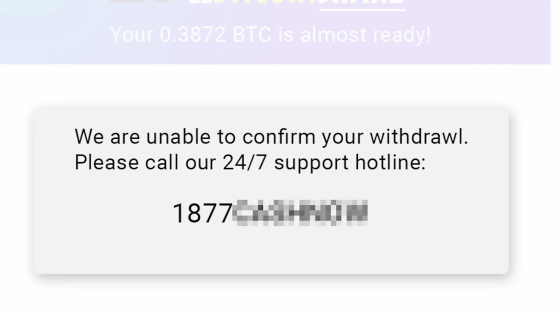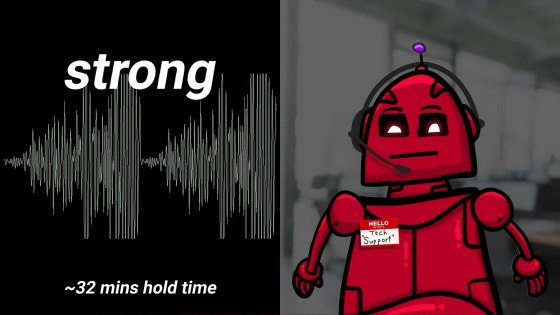An anti-fraud system that traps scammers and pushes them into ``infinite call center hell'' and ``picture quiz hell with no correct answers''

Fraud techniques continue to become more sophisticated, and all assets, including virtual currencies and electronic money, are targeted by fraudsters. Meanwhile, Mr. Kitboga, an anti-fraud YouTuber, has created a system that deceives fraudsters who defraud people of virtual currency, and has released a report on how he made the fraudsters waste their time.
Mr. Kitboga's anti-fraud target was fraud using Bitcoin ATMs . The scammer ``instructs the victim to operate the ATM via phone or message app, deposits money into the Bitcoin wallet, and then requests a photo of the ``QR code that allows access to the wallet management site'' issued by the ATM.'' This method is used to steal money.

Mr. Kitboga sent the fraudster a photo of a ``QR code that accesses an anti-fraud system disguised as a wallet management site'' instead of ``a QR code that can access a wallet management site.''

When a fraudster accesses the anti-fraud system, the first thing they see is an 'image-related quiz' that is likely to be used on general websites to combat bots. However, these images are images generated by image generation AI, and the quizzes were also created just to waste time. For example, on the screen below, a quiz is asked, ``How many peanuts are there in the photo?'' along with a large number of photos of nuts.

Examples of scammers' answers to similar quizzes provided by the anti-fraud system are below. It seems that the answer to the quiz 'What is the height of this wave? (Answer in meters)' ignored the unit specification of '32 feet.'

The question 'Which car is the fastest?' There's no way the correct answer could be determined from the image, but it seems the scammer thought about it rationally and answered, 'Pink car.'

When asked, 'What is this?' pointing to an image of what appeared to be a rotary telephone, the clearly incorrect answer was 'a balance.'

Furthermore, when he showed the chess board and asked, ``Who is winning?'', the answer was ``I don't play chess.''

No matter what answer you enter in the quiz, it will be randomly determined as the correct answer and you will proceed to the next screen. However, when proceeding to the next screen, a very slow progress bar appears, forcing the scammer to wait for a long time.

Once they reach the wallet address entry screen, the fraudster enters the 'fake wallet address' provided by Mr. Kitboga.

There is no way you can withdraw Bitcoin from a fake wallet address, and a notification will be displayed with a phone number and a message asking you to 'contact the call center below.'

Of course this call center is also a trap. It pretends to be a ``very crowded hotline'' and the waiting voice plays endlessly. What's more, scammers can't leave their phones unattended because the message 'Please repeat the word you're about to hear to detect bot contacts' is played regularly.

Mr. Kitboga has succeeded in guiding hundreds of fraudsters to the anti-fraud system. Some fraudsters mistakenly thought the anti-fraud system was a genuine Bitcoin wallet management site and spent more than 59 days on image verification and contacting the call center.

Related Posts:







